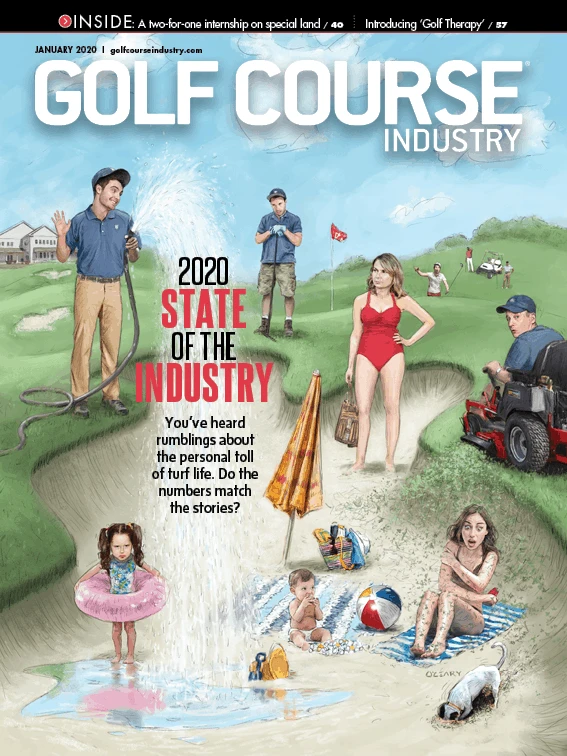
The new decade begins with encouraging economic signs and major budgetary disparities throughout the golf industry.
Less than a quarter (23 percent) of facilities experienced a financial loss in 2019. The situation contrasts 2018, when a woeful weather year consisting of record rainfall and natural disasters in multiple key golf markets resulted in 33 percent of respondents reporting that their facility lost money.
Better weather and continued economic confidence resulted in a solid financial year, with 49 percent of facilities turning a profit in 2019, the highest total in Golf Course Industry’s eight years of collecting economic data. The economic outlook was especially sunny in the Southeast, where 58 percent of facilities were profitable and just 17 percent operated at a loss.
Widespread financial stability and increasing labor costs mean the average non-capital maintenance budget is creeping toward $1 million. The average projected budget for 2020 is $987,488, the highest in survey history, although it must be noted that 51 percent of respondents work at private facilities. The average maintenance budget was $622,500 when Golf Course Industry debuted the State of the Industry survey in 2013.
The gap between private and non-private facilities will expand in 2020, with the average non-capital maintenance budget of a private course ($1,304,730) more than double what a non-private course is projected to spend ($552,202). The gap is significantly greater than in 2019, when private courses had a $991,317 average budget, compared to $677,472 for public courses.
Non-capital maintenance budgets exceeding $1 million are the norm among private facilities, with 59.2 percent expected to reach that total. Only 10.1 percent of non-private courses have projected budgets exceeding $1 million. More than half of public courses (54.3 percent) are projected to have budgets under $500,000.
The number of full-time employees represents a significant difference between private and public courses. Private courses average 11 full-time maintenance employees; non-private courses average six. Labor accounts for 55.6 percent of a maintenance department’s operational budget.
Modern superintendents are heavily involved in the business side of golf, with 22.2 percent reporting they are “completely knowledgeable” about their respective club’s finances. Only 2.1 percent reported having no knowledge of their club’s financial situation. No matter your club’s financial situation, it pays to know about money.











Explore the January 2020 Issue
Check out more from this issue and find your next story to read.
Latest from Golf Course Industry
- From the publisher’s pen: Conscientious of a bigger role
- Bernhard and Company partners with Laguna Golf Phuket
- Terre Blanche showcases environmental stewardship
- VIDEO: Introducing our December issue
- Bernhard and Company introduces Soil Scout
- Nu-Pipe donates to GCSAA Foundation’s Centennial Campaign
- GCSAA enhances golf course BMP tool
- Melrose leadership programs sending 18 to 2026 GCSAA Conference and Trade Show





